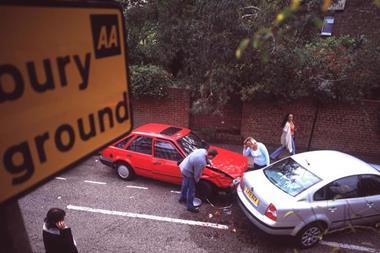Motor insurers face huge losses in 2009 results, according to EMB
Combined loss ratios for the private and commercial motor insurance market in 2009 are set to exceed 115% according to EMB, the international actuarial and business consultancy.
In private motor, combined operating ratios could exceed 120% it said, while commercial motor ratios are likely to exceed 110%.
A sharp increase in bodily injury claims has more than offset the premium increases that insurers have been able to achieve in recent months, EMB claims. This, combined with the reduced reserves available for release, will result in significantly deteriorated reported results for many companies for the year.
Naeem Ali, author of EMB’s Annual Motor Report, said: “It has reached a point now where companies operating in these markets have to make a conscious decision for profitability over growth, or face eroding their capital base. The logical conclusion from these figures is that motor premiums need to increase by circa 20%.”
While underwriting losses, including expenses, are up by at least 10% on 2008, EMB estimated, the big element affecting 2009 results will be the amount of reserves available for release. In 2008 reserve releases reduced bottom line losses by nearly 10%. Now, however, the well appears to be drying up and some companies may have to dip into capital.
Significant rises in the frequency and severity of bodily injury claims are major contributors to the deteriorating performance. EMB estimated an increase in excess of 10% in the cost of bodily injury claims per policy for claims under £100,000 from 2008 to 2009.
It attributed the increase to the impact of the recession and to changes in the claims environment where high profile claims management companies and solicitors have encouraged more people to come forward with a claim. As well as an increased number of claims being reported, insurers are also seeing an increased number of claimants per claim.
For larger claims, the growing trend towards periodic payment awards has also fuelled a notable rise in the number of claims exceeding £5m.
Naeem Ali said that based on recent experience across a large number of companies, EMB had revised its estimates for 2009 performance downwards since publication of the last report on 2008 FSA returns in September.
“Even with recent price increases and the improving yields these are slowly starting to deliver, the signs are that the industry will continue in the red in 2010,” he noted.
EMB believes that insurers can turn around the losses but that it will require a change in pricing and business strategy. Renewed focus on technical pricing for bodily injury, business retention strategies, price optimisation, claims management, anti-fraud measures, and the approach to selling add-ons are among the areas that are likely to help restore margins, it said.
Aggregators continue to present a particular pricing challenge to UK insurers. Results from EMB’s latest tracking research of insurance buying habits showed that only 5% of online consumers had not visited a price comparison site in the previous 12 months, down from 29% a few months before.
Ali added: “Aggregators have changed the way motor insurance is sold in the UK for ever and insurers really have to adapt their underwriting approach to reflect this.”
Hosted by comedian and actor Tom Allen, 34 Gold, 23 Silver and 22 Bronze awards were handed out across an amazing 34 categories recognising brilliance and innovation right across the breadth of UK general insurance.














































No comments yet